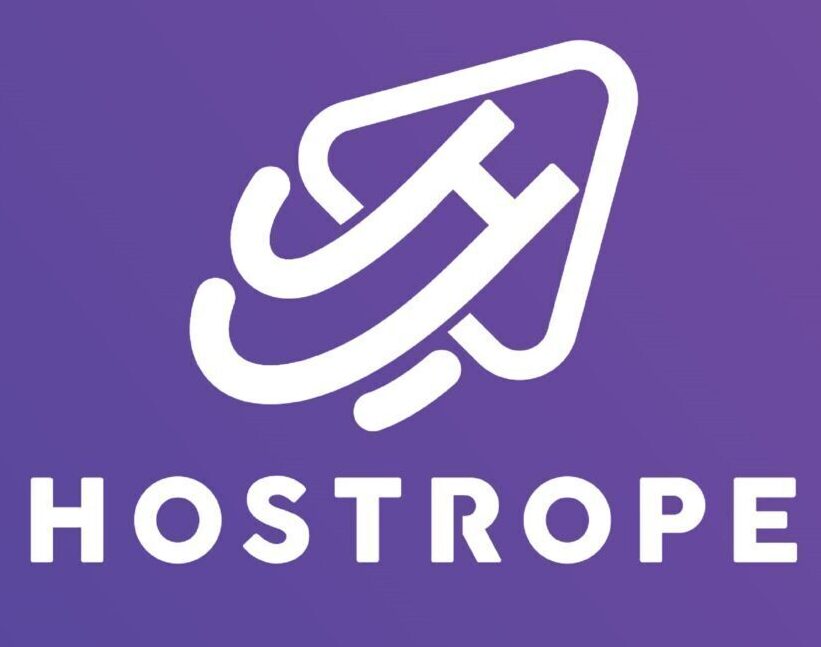Starting an online store can be an exciting venture, but it can also feel overwhelming. With the right guidance, however, you can navigate the process smoothly. This step-by-step guide will help you launch your first online store, covering everything from market research to launching your site.
Table of Contents
- Understanding Your Market
- 1.1 Identifying Your Niche
- 1.2 Conducting Market Research
- 1.3 Analyzing Competitors
- Planning Your Business
- 2.1 Creating a Business Plan
- 2.2 Choosing a Business Structure
- 2.3 Setting Up Financials
- Sourcing Products
- 3.1 Choosing Between Dropshipping and Inventory
- 3.2 Finding Suppliers
- 3.3 Managing Inventory
- Building Your Online Store
- 4.1 Selecting an E-commerce Platform
- 4.2 Designing Your Website
- 4.3 Setting Up Payment Processing
- Legal Considerations
- 5.1 Registering Your Business
- 5.2 Understanding Tax Obligations
- 5.3 Protecting Your Business Legally
- Marketing Your Online Store
- 6.1 Developing a Marketing Strategy
- 6.2 Utilizing Social Media
- 6.3 Email Marketing and Content Strategy
- Launching Your Store
- 7.1 Testing Your Website
- 7.2 Launching Your Store
- 7.3 Gathering Feedback and Making Improvements
- Post-Launch: Ongoing Management
- 8.1 Analyzing Sales Data
- 8.2 Customer Service
- 8.3 Scaling Your Business
1. Understanding Your Market
1.1 Identifying Your Niche
Before starting your online store, it’s crucial to identify your niche. What products are you passionate about? What do you believe will sell well? To narrow down your options, consider the following:
- Interests and Passion: Choose a niche that excites you; this will keep you motivated.
- Market Demand: Research what products are currently trending. Tools like Google Trends or social media platforms can give you insights.
- Profitability: Analyze the potential profit margins in your chosen niche.
1.2 Conducting Market Research
Once you have a niche in mind, it’s time to dive deeper into market research. Understand your target audience, their purchasing behaviors, and preferences. Here are some methods to gather data:
- Surveys and Questionnaires: Create surveys using platforms like Google Forms or SurveyMonkey to gather information directly from potential customers.
- Focus Groups: Engage a small group of people who represent your target market and discuss their shopping preferences.
- Online Research: Use tools like SEMrush or Ahrefs to analyze keyword data, customer reviews, and market trends.
1.3 Analyzing Competitors
Understanding your competitors is essential to position your store effectively. Identify who your main competitors are, what they offer, and how they market their products. Consider the following:
- Competitor Analysis Tools: Use tools like SimilarWeb or BuzzSumo to analyze competitor websites and traffic.
- Product Offerings: Review their product range, pricing, and customer feedback.
- Strengths and Weaknesses: Identify what they do well and where they fall short; this can help you carve out your unique selling proposition (USP).
2. Planning Your Business
2.1 Creating a Business Plan
A business plan is crucial for outlining your goals, strategies, and how you plan to achieve them. Your business plan should include:
- Executive Summary: A brief overview of your business and its objectives.
- Market Analysis: Insights from your research.
- Marketing Strategy: How you plan to attract customers.
- Financial Projections: Revenue expectations and funding requirements.
2.2 Choosing a Business Structure
The structure of your business will affect your taxes, liability, and business operations. Common structures include:
- Sole Proprietorship: Simple to set up but offers no personal liability protection.
- LLC (Limited Liability Company): Offers personal liability protection and tax flexibility.
- Corporation: More complex and offers the highest level of personal liability protection.
Consult with a legal professional or accountant to choose the best structure for your business.
2.3 Setting Up Financials
Establish a solid financial foundation by opening a dedicated business bank account and setting up accounting software like QuickBooks or FreshBooks. Keep track of all your income and expenses to maintain accurate financial records.
3. Sourcing Products
3.1 Choosing Between Dropshipping and Inventory
Decide whether you want to dropship products or hold inventory.
- Dropshipping: You partner with a supplier who fulfills orders on your behalf. This method reduces upfront costs but often results in lower profit margins.
- Inventory: You purchase and hold products, allowing for better control over quality and shipping. However, it requires more upfront investment.
3.2 Finding Suppliers
If you choose to hold inventory, finding reliable suppliers is essential. Consider:
- Online Marketplaces: Platforms like Alibaba, ThomasNet, and Global Sources can connect you with manufacturers.
- Trade Shows: Attend industry trade shows to meet suppliers and see products in person.
- Local Suppliers: Research local manufacturers for potentially lower shipping costs and faster turnaround times.
3.3 Managing Inventory
If you opt to hold inventory, develop a system for tracking stock levels and reordering. Software tools like TradeGecko or Sellbrite can streamline inventory management.
4. Building Your Online Store
4.1 Selecting an E-commerce Platform
Choose an e-commerce platform that suits your needs. Popular options include:
- Shopify: User-friendly and perfect for beginners.
- WooCommerce: Ideal for those familiar with WordPress.
- BigCommerce: Offers robust built-in features for larger stores.
4.2 Designing Your Website
Create an attractive and user-friendly website. Consider the following elements:
- Theme and Layout: Choose a responsive design that works well on mobile devices.
- Product Pages: Include high-quality images, detailed descriptions, and customer reviews.
- Navigation: Ensure easy navigation with a clear menu structure.
4.3 Setting Up Payment Processing
Set up a secure payment processing system. Common options include:
- PayPal: Widely used and trusted by customers.
- Stripe: Allows credit card payments directly on your site.
- Square: Great for both online and in-person sales.
Make sure to offer multiple payment options to accommodate various customer preferences.
5. Legal Considerations
5.1 Registering Your Business
Once you have your business plan in place, register your business with the appropriate government authority. This may include obtaining a business license and registering for taxes.
5.2 Understanding Tax Obligations
Research the tax obligations for your business. This includes sales tax collection, income tax, and any other applicable taxes. Consider consulting with a tax professional to ensure compliance.
5.3 Protecting Your Business Legally
Consider obtaining insurance to protect your business against potential risks. Common types of insurance for online stores include:
- General Liability Insurance: Protects against claims of bodily injury or property damage.
- Product Liability Insurance: Covers claims related to the products you sell.
6. Marketing Your Online Store
6.1 Developing a Marketing Strategy
Create a comprehensive marketing strategy that includes both online and offline tactics. Key components to consider:
- Content Marketing: Develop blog posts and articles that provide value to your target audience.
- SEO (Search Engine Optimization): Optimize your website and content for search engines to improve visibility.
- PPC (Pay-Per-Click) Advertising: Consider using Google Ads or Facebook Ads for targeted advertising.
6.2 Utilizing Social Media
Leverage social media platforms to reach your audience and drive traffic to your store. Popular platforms include:
- Instagram: Perfect for visually appealing products.
- Facebook: Allows for targeted ads and community building.
- Pinterest: Great for driving traffic through pins related to your products.
6.3 Email Marketing and Content Strategy
Build an email list to communicate with potential customers. Offer incentives like discounts or exclusive content to encourage sign-ups. Use email marketing to promote new products, sales, and content updates.
7. Launching Your Store
7.1 Testing Your Website
Before launching, thoroughly test your website to ensure everything functions properly. Check:
- Links and Navigation: Ensure all links work and navigation is intuitive.
- Checkout Process: Test the entire checkout process to confirm it’s seamless.
- Mobile Compatibility: Verify that your site is responsive and works well on mobile devices.
7.2 Launching Your Store
Once everything is tested, it’s time to launch! Consider creating a launch plan that includes:
Announcing the Launch: Use social media, email marketing, and press releases to announce your launch.
Promotional Offers: Consider offering discounts or freebies to encourage first-time purchases.
7.3 Gathering Feedback and Making Improvements
After launching, gather feedback from customers to identify areas for improvement. Use surveys, reviews, and social media interactions to understand customer experiences and preferences.
8. Post-Launch: Ongoing Management
8.1 Analyzing Sales Data
Regularly analyze sales data to understand trends and make informed decisions. Use tools like Google Analytics to track website traffic and conversion rates.
8.2 Customer Service
Providing excellent customer service is essential for building loyalty. Ensure you have clear policies for returns and exchanges, and respond promptly to customer inquiries.
8.3 Scaling Your Business
As your store grows, consider strategies for scaling. This could include expanding your product range, exploring new markets, or investing in additional marketing efforts.
Conclusion
Starting your first online store can be a rewarding endeavor. By following these steps, from understanding your market to ongoing management after launch, you can set yourself up for success. Remember to stay flexible, continuously learn, and adapt your strategies as you grow your business. With dedication and perseverance, you can turn your online store into a thriving enterprise.











Trackbacks/Pingbacks